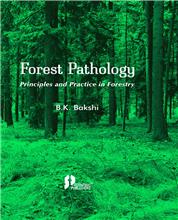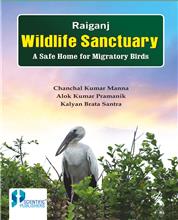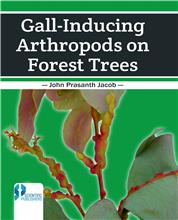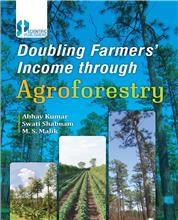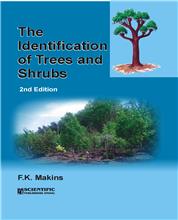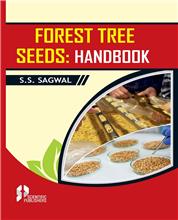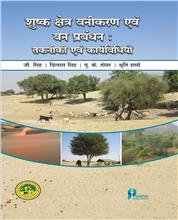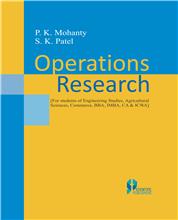Foreword
Preface
1. BACKGROUND CONTEXT OF RAJASTHAN
1. LOCATION
2. PHYSIOGRAPHY
2.1 Western Sandy Plain
2.2 Aravalli Range & Hilly Region
2.3 Eastern Plain region
2.4 South-East Rajasthan Plateau
3. CLIMATE
3.1 Temperature
3.2 Rainfall
3.3. Humidity and moisture
3.4 Winds and storms
3.5 Solar radiations
4. CLIMATIC ZONES
5. DRAINAGE AND WATER RESOURCE
5.1 Drainage system
5.2 Water resource
6. ROCKS AND SOILS
6.1 Rocks in Rajasthan
6.2 Soil in Rajasthan
6.3 Soil fertility and status
7. LAND USE PATTERN
7.1 Area under non-agriculture uses
7.2 Barren and un-culturable Land
7.3 Grazing lands/permanent pastures
7.4 Land under miscellaneous tree crops and groves
7.5 Culturable Waste Land
7.6 Fallow land
7.7 Agricultural land
7.8 Forest coverage
8. SOCIO-ECONOMY
8.1 Human population
8.2 Livestock population
8.3 Socioeconomic indicators
9. CONCLUSION AND RECOMMENDATIONS
2. UNDERSTANDING THE ECOLOGY OF DRY LANDS
1. INTRODUCTION
2. LAND AND WATER
3. BIOLOGICAL DIVERSITY
3.1 Vegetation
3.2 Forests
3.3 Wildlife
4. HUMAN AND LIVESTOCK POPULATION
5. ECOLOGY OF RAJASTHAN
5.1 Climatic conditions in Rajasthan
5.2 Human population growth and dynamics
5.3 Livestock population in Rajasthan
5.4 Land use pattern
5.5 Natural Vegetation
6. CONCLUSION AND RECOMMENDATIONS
3. DESERTIFICATION: LANDS DEGRADATION IN DRYLANDS
1. INTRODUCTION
2. SERVICES OF DRY LAND ECOSYSTEMS
3. DEFINING DESERTIFICATION
4. CAUSES OF DESERTIFICATION
4.1 Wind erosion of soils
4.2 Water Erosion
4.3 Mining activities and mined-wastelands
4.4 Vegetation/forests degradation
4.5 Water logging and salinity
4.6 Intensification of the agriculture and soil deterioration
4.7 Increased industrialization and industrial wastes
4.8 Groundwater depletion
5. DESERTIFICATION ASSESSMENT AND MAPPING
6. EXTENT OF DESERTIFICATION
6.1 Desertification in World
6.2 Desertification in India
6.3 Forest degradation
7. CONCLUSIONS
4. THE ECONOMIC PERCEPTIONS OF LAND DEGRADATION
1. INTRODUCTION
2. IMPACTS OF LAND DEGRADATION
2.1 Impact on productivity
2.2 Impact on socio-ecology
2.3 Impact on hydrology and air quality
3. APPROACHES AND METHODS
3.1 Replacement Cost Approach
3.2 Nonmarket Approaches
3.3 Productivity Change Approach
4. ECONOMICS OF LAND DEGRADATION
4.1 Economics of land degradation in India
5. ECONOMICS OF DROUGHTS
6. CONCLUSION AND FUTURE PERSEPECTIVES
5. RESTORATION STRATEGIES IN DRY AREAS
1. INTRODUCTION
2. MEASURES TO COMBAT DESERTIFICATION
2.1 Prevention
2.2 Protection
2.3 Restoration
3. HISTORICAL APPROACHES
3.1 The community approach
3.2 The ecosystem approach
3.3 Biodiversity-Ecosystem Function Approach
3.4 Landscape approach
4. RESTORATION STRATEGIES
4.1 Rehabilitation
4.2 Reconstruction
4.3. Reclamation
4.4. Replacement
5. ECONOMICS OF RESTORATION
6. FUNCTIONAL APPROACH
6.1 Policy interventions
6.2 Participatory planning and management
6.3 Site-level decisions
6.4 Maintaining biodiversity and ecosystem functions
6.5 Enhanced human well-being
7. GUIDING PRINCIPLES FOR RESTORATION
7.1 Policy implications
7.2 Planning
7.3 Implementation at the field level
7.4 Effective monitoring and evaluation
8. CONCLUSION AND RECOMENDATIONS
6. WIND EROSION AND SAND DRIFT: CONTROL MEASURES AND SUSTAINABLE MANAGEMENT
1. INTRODUCTION
2. WIND ACTION
2.1 Process of sand dune formation
2.2 Types of dunes
2.3 Wind Erosion in western India
3. CONTROL MEASURES
3.1 Temporary measures of sand drifts control
3.2 Permanent sand drifts control
4. WIND EROSION CONTROL AND LIVELIHOOD CONNECTIONS
5. ACTION AHEAD
6. CONCLUSION AND RECOMMENDATIONS
7. RECLAMATION AND MANAGEMENT OF SALT-AFFECTED, WATERLOGGED AND EFFLUENT INFLICTED SOILS
1. INTRODUCTION
2. SALT AFFECTED SOILS
2.1 Distribution of salt affected soils
2.2 Characteristics of salt affected soils
2.3 Salts accumulation and soil properties
2.4 Productivity losses in salt-affected lands
3. SALTLAND VEGETATIONS
4. SALTLANDS RECLAMATION
4.1 Choice of species
4.2 Plantation and management practices
5. WATERLOGGED SOILS
5.1 Reclamation of water logged Areas
5.2 Species and site suitability
5.3 Planting design
6. UTILIZATION OF EEFLUENTS
6.1 Quality of wastewater
6.2 Species suitability for afforestation
6.3 Effluent utilization and productivity
7. BENEFITS OF RECLAIMATION
7.1 Improvement in soil properties
7.2 Enhanced production
8. CONCLUSION AND RECOMMENDATIONS
8. QUALITY SEEDS AND NURSERY MANAGEMENT
1. INTRODUCTION
2. SEED COLLECTION AND STORAGE
2.1 Choice of species
2.2 Seed sources
2.3 Seed collection and time
2.4 Cleaning and storage of seeds
2.5 Seed pre treatment
3. SEED TESTING AND GERMINATIONS
3.1 Seed sampling and testing
3.2 Seed vigour and viability
4. NURSERY PRACTICES AND MANAGEMENT
4.1 Size of a nursery
4.2 Nursery design and construction
4.3 Planning and record keeping
4.4 Bed preparation and potting mixture
4.5 Seed sowing and pricking
5. PRODUCTION OF CONTAINERIZED SEEDLINGS
6. DISEASE AND PEST MANAGEMENTS
6.1 Nursery diseases
6.2 Insect pest in forest nurseries
6.3 Management of the insect pests
7. GENERAL CULTURAL TECHNIQUES
7.1 Shading
7.2 Watering
7.3 Fertilization
7.4 Weeding
7.5 Shoot trimming
7.6 Culling
8. COST OF RAISING NURSERY SEEDLINGS
9. CONCLUSION AND RECOMMENDATIONS
9. PLANTING STOCK IMPROVEMENT
1. INTRODUCTION
2. FUNDAMENTALS OF GENETIC TREE IMPROVEMENT
2.1 Selection
2.2 Breeding
2.3 Testing
3. METHODOLOGY
3.1 Selection
3.2 Seed Orchards
3.3 Vegetative multiplication garden
3.4 Clonal trials
4. IMPROVEMENT IN SOME INDIAN SPECIES
4.1 Teak (Tectona grandis)
4.2 Acacia spp.
4.3 Marwar teak (Tecomella undulata)
4.4 Gmelina arborea
4.5 Siris (Albizzia lebbeck)
4.6 Shisham (Dalbergia sissoo Roxb)
4.7 Poplars
4.8 Ardu (Ailanthus excelsa)
4.9 Eucalyptus species
4.10 Casuarina (Casuarina equisetifolia Linn)
4.11 Phyllodinous acacias
4.12 Subabul (Leucaena leucocephala (Lam.) de Wit)
4.13 Sandal (Santalum album)
4.14 Semul (Bombax ceiba L.)
4.15 Beul (Grewia optiva)
4.16 Kachnar (Bauhinia variegata)
4.17 Neem (Azadirachta indica)
4.18 Guggul (Commiphora wightii)
4.19 Khejri (Prosopis cineraria)
4.20 Bamboos
5. CONCLUSION AND FUTURE PROSPECTS
10. PLANT PRODUCTION AND PLANTING TECHNIQUES
1. INTRODUCTION
2. PLANT PROPAGATION
2.1 Plant production through macro-propagation
2.2 Plant production through micro-propagation
2.3 Seedling quality
3. PLANTATION TECHNIQUES
3.1 Site survey and selection
3.2 Selection of planting species
3.3 Preparation of the planting site
3.4 Plantation density
3.5 Layout design of plantation
3.6 Pit excavation and refilling
3.7 Time of planting
3.8 Plantation
3.9 Planting position
4. POST PLANTING CARE
4.1 Mulching
4.2 Water conservation and irrigation
4.3 Weed control
5. COST OF PLANTATIONS
6. CONCLUSIONS AND RECOMMENDATIONS
11. WATER MANAGEMENT AND IRRIGATION IN DRY REGION
1. INTRODUCTION
2. NEEDS OF WATER HARVESTING
3. RAINWATER HARVESTING AND UTILIZATION
3.1 Concept of rainwater harvesting
3.2 Estimation of potential runoff yield
4. RAIN WATER HARVESTING AND CONSERVATION
4.1 Water harvesting and utilization
4.2 On site conservation measures
4.3 Micro-catchments and trenches
4.4 Drainage line treatments
4.5 Ground water recharge
5. IRRIGATION WATER MANAGEMENT
5.1 Methods of irrigation
5.2 Drip irrigation
6. EFFECT OF SOIL AND WATER CONSERVATION
6.1 Micro-catchment and plantation
6.2 Run-off control and soil improvement
6.3 Rainwater harvesting and biodiversity
7. CONCLUSION AND FUTURE PLANS
12. ASSISTED REGENERATION AND SEED SOWING FOR DRYLANDS RESTORATION
1. INTRODUCTION
2. ASSISTED REGENERATION
3. DIRECT SEEDING
4. SEED SOWING VS. NURSERY RAISING
5. SOIL SEED BANK
6. TARGET SPECIES
7. NURSE PLANTS AND THEIR EFFECTS
8. FACTORS OF DIRECT SEEDING SUCCESS
8.1 Seed size, dispersal and seed bank
8.2 Seed collection, storage and treatments
8.3 Site selections and preparation
8.4 Time of sowing
8.5 Sowing rates
8.6 Methods of sowing
9. POST GERMINATION CARING
9.3 Pest Management 386
10. PERFORMANCE EVALUATION
11. CONCLUSION AND RECOMMENDATIONS
13. PROTECTION AND POST PLANTING CARE OF FORESTS AND FOREST NURSERIES
1. INTRODUCTION
2. TREE SPECIES AND THEIR PESTS/DISEASES
2.1 Acacia nilotica (Desi Babul)
2.2 Prosopis cineraria (Khejri)
2.3 Prosopis juliflora (Vilayati babool)
2.4 Azadirachta indica (Neem)
2.5 Acacia leucophloea (Ronjh)
2.6 Tecomella undulata (Rohida)
2.7 Boswellia serrata (Salai Guggul)
2.8 Anogeissus spp.
2.9 Albizia lebbek (Siris)
2.10 Acacia tortilis (Israeli Babool)
2.11 Acacia Senegal (Kumath)
2.12 Zizyphus spp.(Ber)
2.13 Salvadora persica (Jaal)
2.14 Alianthus sp: (Ardu)
2.15 Bauhinia spp (Kachnaar)
2.16 Eucalyptus species
2.17 Tectona grandis (Teak)
2.18 Gmelina arborea
2.19 Dalbergia sissoo
3. SYMPTOMS BASED MANAGEMENT OF TREE DISEASES
3.1 Nursery diseases
3.2 Management of nursery diseases
3.3 Nursery insect pests
3.4 Management of insect pests
4. DISEASES OF PLANTATION AND FOREST STANDS
4.1 Types of diseases
4.2 Management of diseases in plantation
4.3 Plantation and forest insect pests
4.4 Management of insect pest in plantation forest
5. CONCLUSION AND FUTURE THRUST
14. PLANT GROWTH AND BIOMASS PRODUCTION OF DRY FORESTS
1. INTRODUCTION
2. GROWTH AND BIOMASS
2.1 Plant density
2.2 Soil water availability
2.3 Light intensity
2.4 Air temperature
2.5 Atmospheric CO2 concentration
2.6 Nutrient fertilization
2.7 Community composition
3. GROWTH MODELLING AND BIOMASS PREDICTIONS
3.1 Methods of forests assessment
3.2 Volume and yield tables
3.3 Assessment of forest biomass
4. CONCLUSION AND RECOMMENDATIONS
15. PEOPLE PARTICIPATION AND FOREST MANAGEMENT
1. INTRODUCTION
2. DEGRADING FORESTS
2.1 Forest history of India
2.2 Forest history of Rajasthan
2.3 Forest vs. People
3. PEOPLE'S PARTICIPATION
3.1 Forest management regimes
3.2 How community is engaged
4. FOREST MANAGEMENT
4.1 Historical background of forest management
4.2 Forests Management Practices
5. INITIATIVES OF GOVERNMENT OF INDIA
6. CONCLUSION AND WAY FORWARD
16. BIBLIOGRAPHY
SUBJECT INDEX


